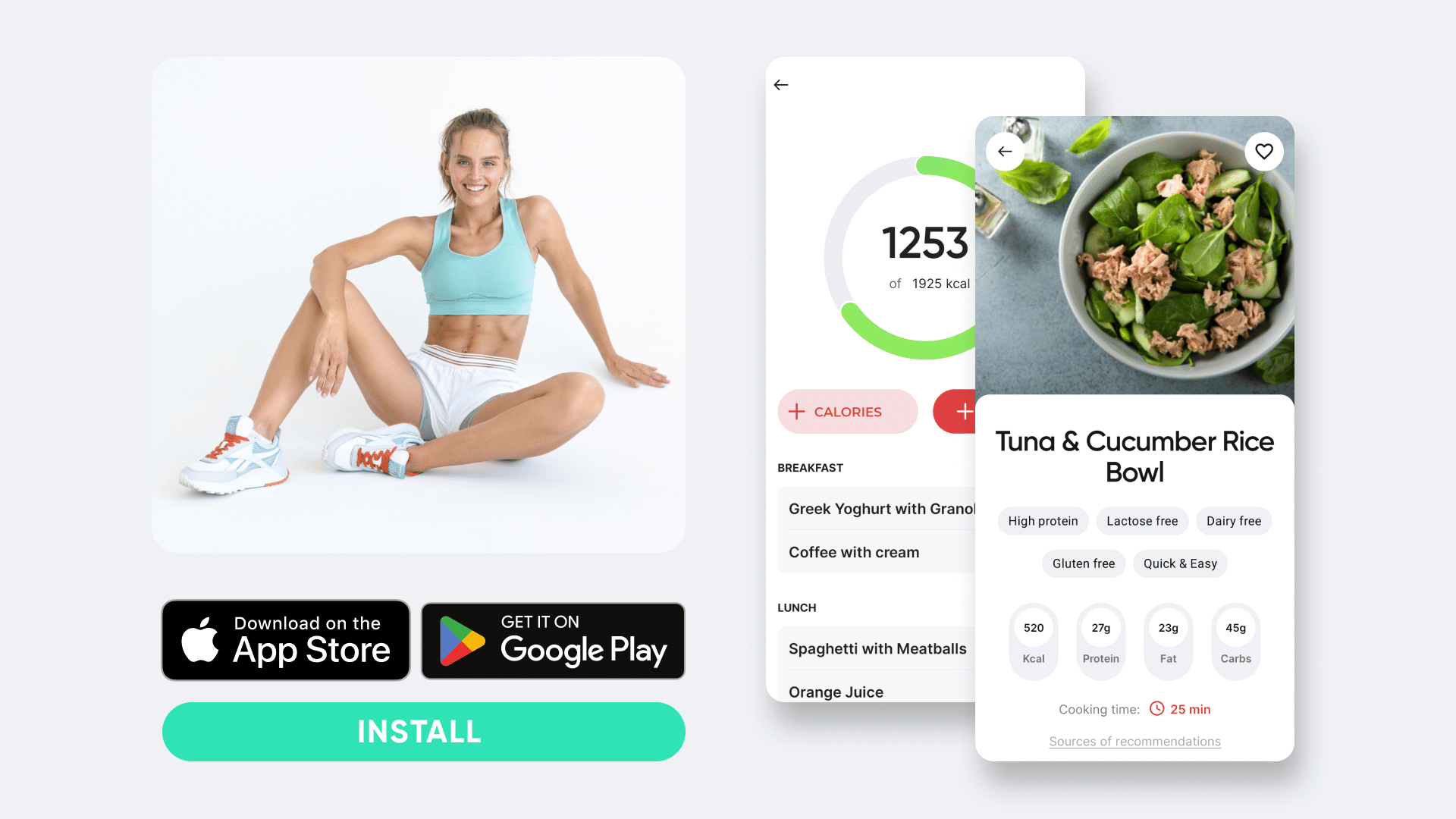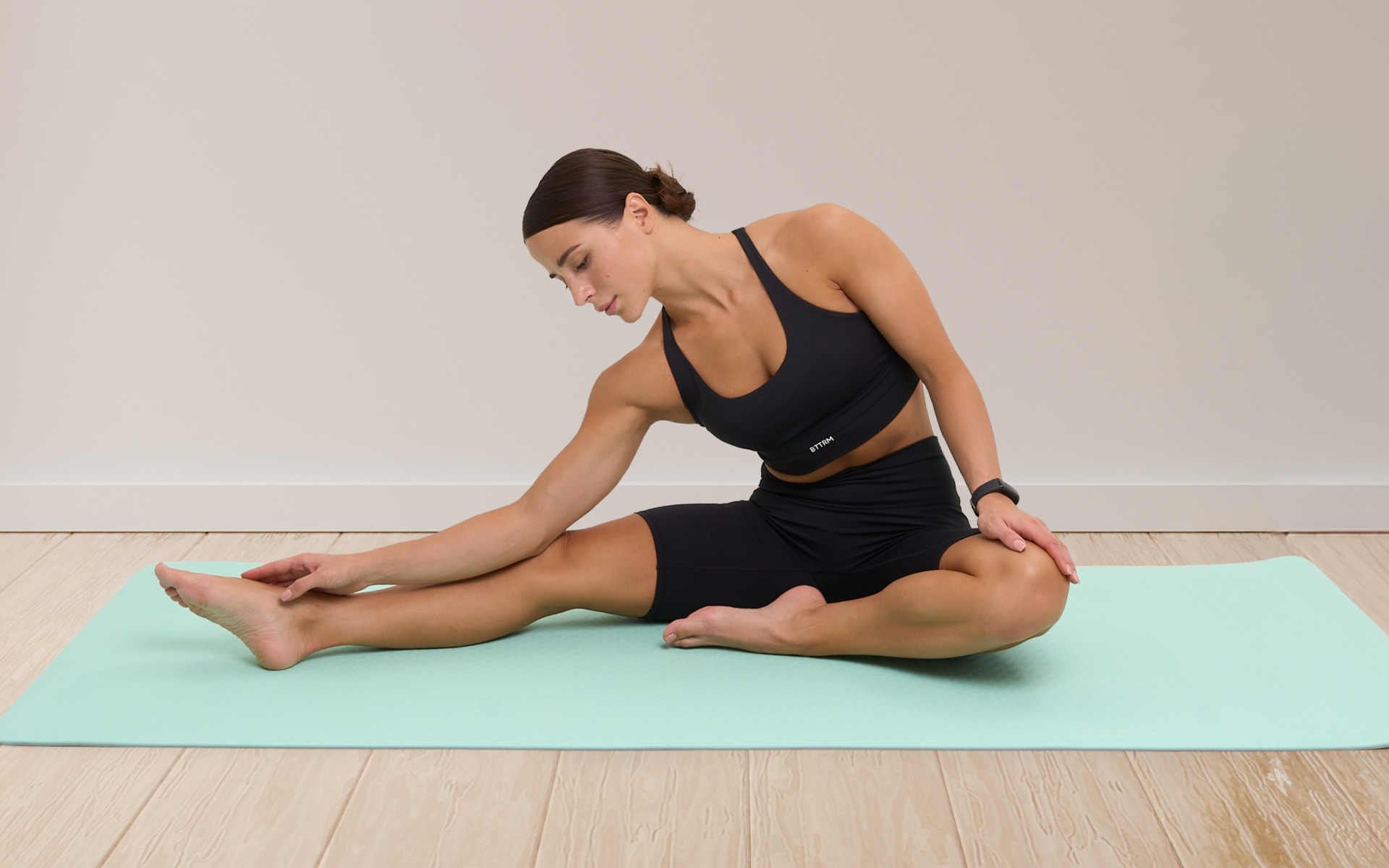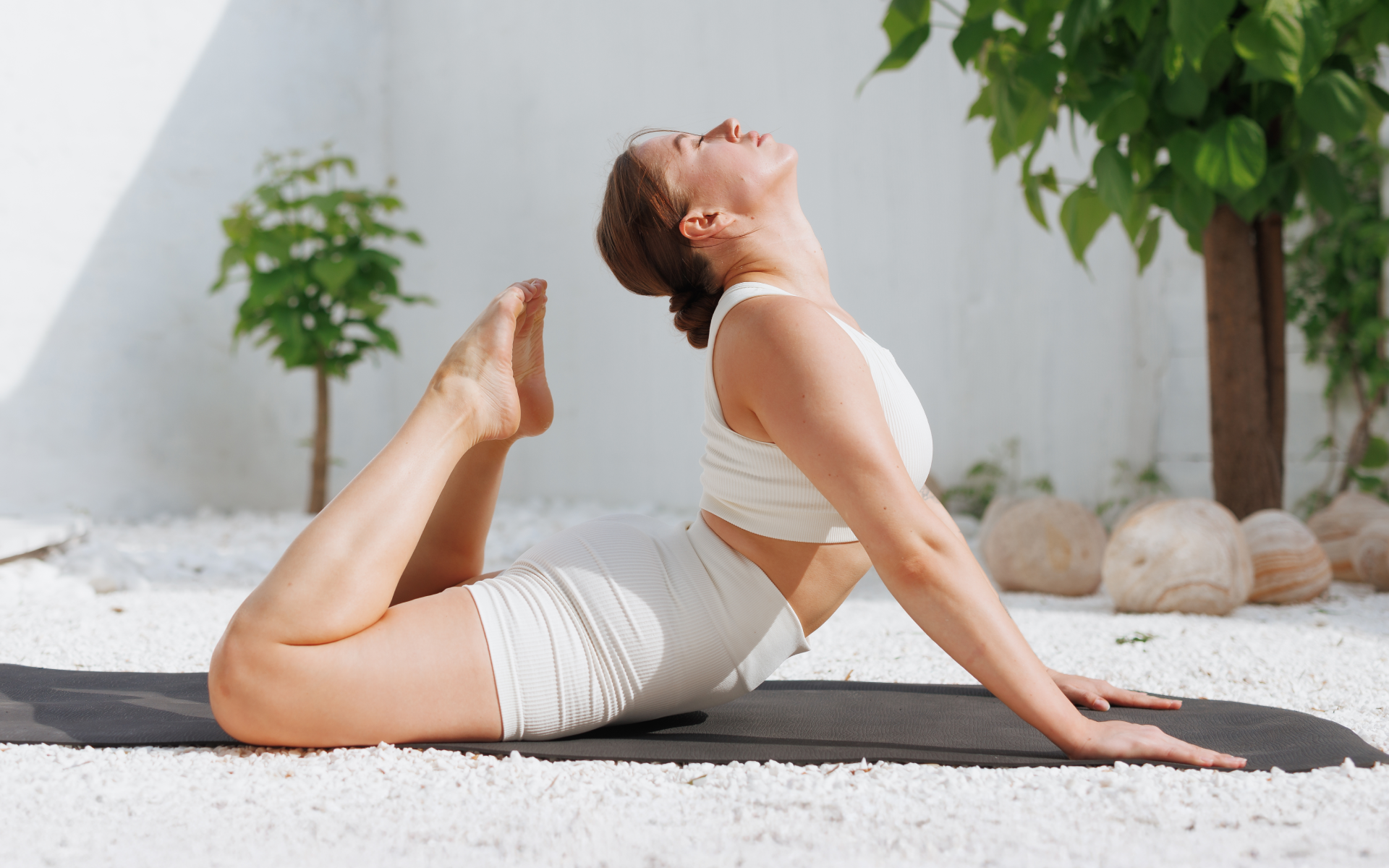Weight loss is often one of the primary goals for those who adopt a keto diet. Research has proven that a ketogenic approach can indeed be an effective strategy for this purpose (25).
Weight loss has benefits that extend beyond one’s appearance, including possible improvements in blood sugar control, cardiovascular health, and overall well-being. So, when you’ve carefully followed the keto diet for a significant period, yet the scale refuses to budge, you may find yourself in a state of frustration and confusion.
The truth is; weight loss is a complex process influenced by more than just diet. Various factors can stall progress even on such a structured plan as keto.
Here are 9 key reasons why people might not see the weight loss results they expect from a keto diet and practical advice on what to do about it.
Can You Be In Keto and Not Lose Weight?
Yes, it is possible to be in a state of ketosis and still struggle with weight loss. Being in ketosis simply means that your body is burning fat for energy instead of glucose, but that doesn’t guarantee weight loss (11).
Weight loss is influenced by multiple factors, including calorie intake, activity level, hormones, and genetics (5). Even on a keto diet, one or more of these factors might be working against you, causing weight loss to stall or even cause weight gain.
If you’re saying “I’m in ketosis but not losing weight,” you’ll want to take a closer look at your diet and lifestyle habits to identify potential roadblocks.
Why Am I Not Losing Any More Weight on Keto?
Your progress might have stalled because you’ve reached a weight loss plateau, which is a common occurrence for many people on any type of diet.
Here are the most prevalent culprits that could be preventing you from losing weight while following a keto diet:
- You’re not actually in ketosis
- You’re consuming too many calories
- You’re not eating enough
- You’re eating nutrient-poor foods
- You’re intolerant/allergic to something in your diet
- You have an undiagnosed medical condition
- You’re stressed
- You’re not physically active
- You have unrealistic expectations of weight loss on the keto diet
BetterMe App helps you achieve your body goals with ease and efficiency by helping to choose proper meal plans and effective workouts. Start using our app and you will see good results in a short time.
1. You’re Not Actually In Ketosis
Ketosis is a metabolic state where your body burns fat for fuel instead of carbs (14). It’s the goal for folks on a keto diet because, for weight loss, burning fat sounds pretty ideal, right?
To get into this fat-burning zone, you typically need to consume about 20 to 50 grams of carbs per day, give or take, depending on your own body’s metabolism. This sharp cutback on carbs causes your body to switch to fats for fuel.
Ketosis is essentially your body’s plan B for energy production. When you eat fewer carbs, your body runs out of its go-to energy source (glucose) and starts burning fat for fuel instead. This shift not only helps with weight loss but can also lead to increased energy levels and sharper mental clarity (14).
To achieve this fat-burning state, you generally need to limit your carb intake to about 20 to 50 grams per day.
However, hitting that sweet spot of ketosis isn’t always straightforward, and there are a couple of reasons you might not be there yet.
Underestimating Carb Intake
A common hiccup is underestimating how many carbs you’re actually consuming. You might think you’re doing a great job keeping your carb intake down, but carbs have a sneaky way of popping up in places you wouldn’t expect.
We’re talking about hidden carbs – those found in sauces, dressings, or even “low-carb” products. Always read labels closely, because these hidden carbs can quickly add up and kick you out of ketosis.
Remember, while the standard diet requires 55% carbs, a keto diet only allows for 5-10% (12). So, if you’re eating too many “hidden” carbs, it’s easy to go over that limit.
Eating Too Much Protein
Another potential roadblock is eating too much protein. Yes, the keto diet allows for more protein than, say, a standard low-carb diet, but if you go overboard, your body can convert excess protein into glucose through a process called gluconeogenesis (10).
This, in turn, might be enough to shift you out of ketosis. Even while eating low-carb, high-protein foods like chicken or eggs, your body might still be getting enough glucose to keep it from burning fat.
How to Tell You’re in Ketosis
So, how can you tell if you’ve successfully entered ketosis? Here are a few signs to look out for (19):
- Increased ketones in the blood, breath, or urine: You can actually measure your ketone levels using specific tests.
- Weight loss: This might seem obvious, but consistent weight loss is a good sign you’re in the fat-burning zone.
- Reduced appetite: Many people experience a noticeable drop in hunger, thanks to the appetite-suppressing effect of being in ketosis.
- Short-term fatigue: This is more a sign of entering ketosis rather than being established in it, but it’s worth mentioning as part of the adaptation process.
- Frequent urination: This is a common side effect of starting the keto diet, as your body flushes out excess water weight and stored glycogen.
- Bad breath: This is another unpleasant side effect that some people experience when first entering ketosis, but it should subside as your body adapts.
- Dry mouth and thirst: Along with frequent urination, you may also notice a dry mouth and increased thirst due to the diuretic effect of ketosis.
What to Do About It
If you suspect you’re not actually in ketosis, here’s what you can do:
- Track your carb intake to ensure you’re not accidentally consuming too much.
- Monitor your protein intake to make sure it’s adequate but not excessive.
- Test your ketone levels to know for sure whether you’re in ketosis.
- Review your entire food intake for hidden carbs in processed foods and try to stick to whole, unprocessed foods as much as possible.
- Consider implementing intermittent fasting to jumpstart ketosis or break through a stall.
- Be patient and consistent. It may take some time for your body to fully adapt to burning fat for fuel, so don’t give up too soon!
Read more: Is Pho Keto? The Ultimate Guide to Enjoying Pho on a Low-Carb Diet
2. You’re Consuming Too Many Calories
A calorie deficit occurs when you consume fewer calories than your body needs to maintain its current weight. Your body will then have to use stored fat for energy, which, in turn, leads to weight loss. Creating a calorie deficit is the foundation of weight loss, regardless of the diet plan you’re following (15).
To hit that calorie deficit sweet spot, you’ve got to understand your body’s daily caloric needs and then eat less than that amount. Bear in mind though, each person’s caloric needs are different and depend on multiple factors like activity level, age, and muscle mass.
Being on a keto diet might make you think you’re automatically in a calorie deficit. But that’s not always the case.
Underestimating Calorie Content
It’s incredibly easy to underestimate how many calories you’re actually eating. This is particularly true with high-fat foods, which are staple in keto but also very calorie-dense. Just a little extra oil or a handful of nuts can add up to many more calories than you might expect.
All macronutrients have calories, so even if you’re strictly counting carbs and not paying attention to fats and proteins, you could still be consuming more calories than your body needs.
Overeating “Keto-Friendly” Foods
The keto diet has become popular in recent years, leading to a plethora of low-carb, high-fat products marketed towards keto dieters. While these may be technically “keto-friendly,” they still contain calories and can contribute to weight gain if not consumed in moderation.
Too Much Snacking
Frequent snacking can push you over your calorie needs without you even realizing it. Those little bites here and there add up over the course of a day.
Always reaching for a snack might be a sign that you’re not eating enough satiating meals, so consider increasing your meal sizes, instead of relying on snacks.
How To Tell You’re in a Calorie Deficit
If you’re in a real calorie deficit, you’ll likely notice:
- Steady weight loss over time (don’t expect this to be linear, though!).
- Increased feelings of hunger, especially as you adjust to eating less.
- Possible energy dips initially, as your body adapts to getting fewer calories.
- Possible reduction in strength or athletic performance, particularly if you’re not eating enough protein.
- Improved body composition, even if the scale doesn’t move much (muscle weighs more than fat!).
What to Do About It
Caught in the snacking cycle or underestimating your calorie intake? Here’s how to get back on track:
- Track your food intake. This doesn’t have to be forever, but it’s a great way to get a handle on how many calories you’re actually consuming.
- Measure your portions. Eyeballing portions can lead to underestimating calorie intake, so get friendly with kitchen scales and measuring cups.
- Prioritize whole, unprocessed foods, as they tend to be more satisfying and less calorie-dense than processed foods.
- Structure your meals to reduce snacking. Aim for satisfying, nutrient-dense meals that decrease the urge to snack.
- Be patient with yourself. Creating a sustainable calorie deficit takes time to adjust to, both mentally and physically.
Our 7-Day Vegetarian Keto Meal Plan guide is a great place to start if you’re looking for ideas on how to structure your meals and snacks while staying within a calorie deficit.
3. You’re Not Eating Enough
It’s a common misconception that the key to weight loss is simply “eating less.” While it’s true that consuming fewer calories than your body needs will create a calorie deficit and lead to weight loss, taking it too far can backfire.
When you eat too few calories, your body may respond by slowing down your metabolism and conserving energy. This can make weight loss more difficult, as your body tries to hold onto its fat stores for fuel (9).
Not eating enough can also result in stubborn weight plateaus, as your body adapts to the low-calorie intake and becomes more efficient at holding onto fat.
How To Tell You’re Not Eating Enough
Signs that you may not be eating enough include:
- Extreme hunger and food cravings. A constant feeling of wanting to eat more, even after a meal.
- Decreased energy levels. Feeling sluggish, tired, or weak.
- Difficulty losing weight. Despite being in a calorie deficit, the scale doesn’t budge or show fluctuations.
- Changes in mood. Feeling irritable, anxious, or depressed.
- Constantly cold. A reduced calorie intake can lead to lower body temperature and feeling cold all the time.
What To Do About It
If you suspect you’re not eating enough, here’s what you can do:
- Track your food intake for a few days. This will give you a better understanding of how many calories you’re consuming and whether it’s enough for your body’s needs.
- Increase your calorie intake gradually by adding in an extra snack or slightly increasing portion sizes at meals.
- Focus on nutrient-dense, filling foods. Prioritize protein, healthy fats, and fiber-rich carbohydrates to help keep you satiated and satisfied.
- Listen to your body’s hunger cues. Eat when you’re truly hungry and stop when you’re full, instead of solely relying on calorie counting.
- Speak with a healthcare professional or registered dietitian to get personalized advice for your specific situation. They can help determine a healthy calorie intake range for you based on your goals and needs.
If you wish to free yourself from all the extra pounds that have been weighting you down for way too long, start using the BetterMe app and overhaul your entire life!
4. You’re Eating Nutrient-Poor Foods
It’s possible to be in a calorie deficit and still not lose weight if you’re filling up on nutrient-poor foods. Nutrient-poor or “empty” calories refer to foods that don’t provide much in the way of vitamins, minerals, or other essential nutrients.
On the keto diet it’s tempting to rely heavily on processed low-carb products like bars, shakes, and snacks. While these may fit within your macros, they often lack the essential nutrients found in whole foods.
Furthermore, research shows the harmful effects of certain artificial sweeteners and additives commonly found in processed keto-friendly products. These substances can disrupt hormone balance, increase inflammation, and even contribute to weight gain (24).
The sneakiest way these additives affect you is by triggering cravings and overeating. The high reward value of these artificially sweetened foods can cause you to crave more and more, leading to increased calorie intake.
In our previous blog: Why Am I Not Losing Weight on Keto, we dive deeper into the effects of processed foods on your weight loss journey and provide tips for making healthier choices.
How To Tell You’re Not Getting Enough Nutrients
Signs that you may not be getting enough nutrients include:
- Lack of energy or fatigue, even if you’re consuming enough calories. This could be a sign of vitamin or mineral deficiencies.
- Constant cravings, especially for sweet or processed foods. Your body may be lacking essential nutrients and craving them in the form of high-calorie, low-nutrient foods.
- Mood swings, irritability, and difficulty concentrating. These could be signs of nutrient imbalances or deficiencies.
- Decreased athletic performance or having difficulty recovering from workouts. Nutrient deficiencies can hinder your body’s ability to repair and recover after exercise.
- Dry skin, hair, or nails can be a sign of not getting enough essential fatty acids and other nutrients from your diet.
What to Do About It
If you suspect you’re not getting enough essential nutrients on the keto diet, here’s what you can do:
- Prioritize whole foods over processed low-carb products. Whole foods are rich in essential nutrients and also more filling, so you’re less likely to overeat.
- Include a variety of foods in your keto diet. Don’t solely rely on a few staple foods – mix it up with different types of meats, vegetables, and healthy fats to get a wide range of nutrients.
- Consider supplementing with key vitamins and minerals. While whole foods should be your main source of nutrients, taking a daily multivitamin or specific supplements for deficiencies can help fill any gaps in your diet.
- Listen to your body and adjust accordingly. If you’re experiencing symptoms of nutrient deficiencies, it may be time to reassess your food choices and make changes as needed.
5. You’re Intolerant/Allergic To Something In Your Diet
Food intolerance means having difficulty digesting certain foods (7). Allergies occur when your immune system reacts to a particular food (6). Both can lead to uncomfortable symptoms, one of which may be inflammation and bloating, causing weight gain in the stomach area.
On diets like keto, you tend to eat a higher percentage of certain types of foods, like high-fat dairy and nuts. If your body struggles to digest these types of food or if you have an allergy, it can lead to inflammation and bloating.
Not all food intolerances and allergies are obvious, though. In fact, many people may have a sensitivity to certain foods but not realize it because symptoms can be delayed or appear days after consuming the offending food.
Common Food Intolerances/Allergies on Keto
There are several potential culprits when it comes to food intolerance/allergy on the keto diet:
- Dairy: Dairy products like milk, cheese, and yogurt contain lactose, a type of sugar that is difficult for some people to digest (13).
- Nuts/seeds: Nuts and seeds contain compounds like phytic acid and lectins, which is problematic for some people (1).
- Eggs: Eggs are a common allergen, particularly the egg whites.
- Soy products: Soy contains isoflavones, a type of phytoestrogen that can cause digestive issues for some people (21).
- Artificial sweeteners: Some artificial sweeteners, like sucralose and aspartame, have been linked to digestive problems in some individuals (2).
How To Tell If You’re Intolerant/Allergic
It can be challenging to determine if you have a food intolerance or allergy on your own. Here are some common signs to watch out for:
- Digestive issues, such as bloating, gas, constipation, or diarrhea.
- Skin problems, like eczema or hives.
- Excessive fatigue after consuming certain foods.
- Inflammation in your joints or muscles.
- Mood changes, such as irritability or anxiety.
- Brain fog and difficulty concentrating.
What to Do About It
- Eliminate potential trigger foods one at a time to see if your symptoms improve.
- Keep a food diary to track what you eat and any symptoms that arise.
- Consult with a healthcare professional for allergy testing or dietary guidance.
- Experiment with alternative foods, such as dairy-free milk or nut-free options, to see if your symptoms improve.
- Consider trying an elimination diet, where you remove all potential trigger foods for a period of time and then slowly reintroduce them to see which ones may be causing issues.
- Listen to your body and pay attention to any symptoms that arise after eating certain foods. Trust your gut (pun intended) if something doesn’t feel right, and make adjustments accordingly.
6. You Have an Undiagnosed Medical Condition
Sometimes, weight loss stalls can be caused by underlying medical issues. Conditions that affect our metabolism, hormone levels, or gut health can impact our ability to lose weight. Here are a few medical conditions that may be contributing to your stalling (4):
- Thyroid issues: An underactive thyroid (hypothyroidism) can slow down your metabolism and make it more difficult to lose weight.
- Polycystic ovary syndrome (PCOS): PCOS can cause an imbalance in hormones, leading to weight gain and difficulty losing weight.
- Cushing’s syndrome: This rare condition is caused by high levels of cortisol (a stress hormone) and can lead to unexplained weight gain and difficulty losing weight.
- Gut imbalances or digestive issues: Issues like small intestinal bacterial overgrowth (SIBO), leaky gut syndrome, or food sensitivities can impact our ability to absorb nutrients and affect our overall health (20).
What to Do About It
If you suspect that a medical condition may be hindering your weight loss efforts, it’s best to consult with a healthcare professional for proper diagnosis and treatment. In the meantime, here are some general tips:
- Track your symptoms. Note any changes in your body or how you feel and share this information with your healthcare provider.
- Consider getting blood work done. A simple blood test can check for hormonal imbalances, nutrient deficiencies, and other issues that may be affecting your weight loss.
- Address gut imbalances. If digestive issues are suspected, work with a healthcare professional to identify potential triggers and develop a plan to heal your gut.
- Follow your treatment plan. If you do have an underlying medical condition, it’s important to follow your healthcare provider’s recommendations for proper management and treatment.
Read more: 6 Keto Sushi Recipes to Eat on a Low-Carb Diet
7. You’re Stressed
Stress can have a significant impact on your body and overall health, including weight gain. When we’re stressed, the body releases cortisol, a stress hormone that increases appetite and drives cravings for high-sugar and high-fat foods (22).
Under chronic stress, this constant flood of cortisol can lead to overeating and weight gain (23). Additionally, when we’re feeling stressed, self-care often takes a backseat, leading to poor food choices and less physical activity.
How To Tell If Stress Is Sabotaging Your Weight Loss Efforts
- Increased cravings for unhealthy, high-sugar and high-fat foods.
- Emotional eating, using food to cope with stress or other emotions.
- Difficulty sticking to a healthy routine, whether it’s exercise or meal planning.
- Lack of motivation or energy to perform day to day tasks.
- Poor sleep and increased fatigue.
- Stagnant or increased weight, even with a calorie deficit.
What to Do About It
While you can’t totally eliminate stress from your life, there are things you can do to manage it better:
- Prioritize sleep. Lack of sleep can compound stress levels and make it harder for your body to regulate cortisol. Aim for 7-9 hours of quality sleep each night.
- Incorporate stress-reducing activities into your daily routine, such as meditation, yoga, deep breathing exercises, or walks in nature.
- Eat nourishing, whole foods to support your body’s ability to cope with stress and reduce cravings for unhealthy comfort foods.
- Make time for self-care, whether it’s taking a relaxing bath, reading a book, or doing something you enjoy. Self-care is not selfish and can help reduce stress levels.
- Seek support from others through therapy, support groups, or talking to trusted friends and family members. Don’t be afraid to ask for help when needed.
8. You’re Not Physically Active
While the keto diet can lead to weight loss without any additional exercise, being physically active has numerous benefits for overall health and well-being. Regular exercise can boost weight loss by increasing calorie expenditure (17). If you’re not seeing the scale move, it may be because you’re not incorporating physical activity into your routine.
Moving more can also help improve metabolic health, increase muscle mass, and promote better sleep (16). Plus, it’s great for mental health and can reduce stress levels (18).
The Centers for Disease Control and Prevention (CDC) recommends at least 150 minutes of moderate-intensity aerobic activity, or 75 minutes of vigorous-intensity aerobic activity, per week (8). This equates to about 30 minutes of exercise per day, five days a week.
What to Do About It
If you’re not currently active but want to incorporate regular exercise into your routine, here are some tips:
- Start small. Don’t overwhelm yourself by trying to do too much at once. Start with a manageable amount of exercise and gradually increase over time.
- Find activities you enjoy. Exercise doesn’t have to be limited to going to the gym or running on a treadmill. Find physical activities that you love, whether it’s hiking, dancing, yoga, or team sports.
- Make it a habit. Consistency is key when it comes to exercise. Set a schedule and stick to it, even if it’s just 20 minutes a day.
- Incorporate strength training. Building muscle mass can boost your metabolism and help with weight loss.
- Listen to your body. If you feel tired or fatigued, take a rest day. It’s important to listen to your body’s signals and give it the rest it needs. Don’t push yourself too hard, especially if you’re just starting out.
9. You Have Unrealistic Expectations of Weight Loss On Keto
If you’re concerned about not losing weight on keto after 2 weeks, or if you’re not seeing the weight loss results you were hoping for, you may have unrealistic expectations of how quickly you should be losing weight.
The truth is, healthy and sustainable weight loss takes time. It’s not uncommon for individuals on keto to see a rapid initial drop in weight due to water weight loss, but after that, progress may slow down.
Don’t get discouraged if you’re not dropping pounds as quickly as you’d like. Focus on the bigger picture of improving your overall health and well-being, rather than just reaching a specific number on the scale.
How to Set Realistic Expectations
- Understand that weight loss is not linear and can fluctuate day-to-day or week-to-week.
- Shift your focus to non-scale victories, such as improved energy levels, better sleep, and increased strength.
- Be patient and consistent. Sustainable weight loss takes time, so don’t give up too soon!
- Seek support from others who understand the struggles of weight loss and can offer encouragement and accountability.
- Remember that the scale is just one measure of progress. Pay attention to how you feel and the positive changes you’re making in your diet and lifestyle.
FAQs
How Can I Speed Up Ketosis Weight Loss?
You can speed up ketosis weight loss by tracking your macros and keeping them within the recommended ranges, staying hydrated, exercising regularly, and getting enough quality sleep.
Why Am I Gaining Weight on Keto and Intermittent Fasting?
You might be gaining weight on keto and intermittent fasting, due to consuming too many calories or not properly tracking your macros. It’s also possible that you’re building muscle mass, which can lead to weight gain even as you lose body fat.
Check out our High Calories Keto Foods Guide to learn more about foods that may be contributing to weight gain on keto.
Can You Eat Too Little on Keto?
Yes, it’s possible to eat too little on keto. Consuming too few calories can slow down weight loss and lead to nutrient deficiencies (3). It’s important to listen to your body’s hunger signals and ensure you’re eating enough nourishing foods.
Stick to the recommended macros for your body and consult with a healthcare professional if you have concerns about not eating enough on keto.
Will I Get Fat If I Stop Keto?
Stopping keto doesn’t automatically lead to weight gain. It’s important to maintain healthy eating habits and a regular exercise routine, regardless of your diet.
If you go back to a high-carb, processed food diet after stopping keto, you may experience weight gain due to the increased consumption of unhealthy foods. However, if you continue to make nourishing food choices and stay physically active, you can maintain a healthy weight even after stopping keto.
Is Too Much Protein Bad on Keto?
Too much protein on keto can be counterproductive because it can kick you out of ketosis (10). It’s important to stick to the recommended protein intake for your body and focus on consuming healthy fats as the main source of energy on a keto diet.
What Happens If You Eat Too Little Calories on Keto?
Eating too few calories on keto can slow down weight loss, lead to nutrient deficiencies, and cause fatigue and other negative side effects. It’s important to listen to your body’s hunger signals and make sure you’re eating enough nourishing foods while sticking to the recommended macros for your body.
The Bottom Line
Although keto is a popular and effective way to lose weight, it’s not an instant, magic pill. It still requires effort, consistency, and patience to see results. By monitoring your calorie intake, setting realistic expectations, and consulting with a healthcare professional, you can overcome weight loss plateaus and continue on your journey towards better health.
DISCLAIMER:
This article is intended for general informational purposes only and does not serve to address individual circumstances. It is not a substitute for professional advice or help and should not be relied on for making any kind of decision-making. Any action taken as a direct or indirect result of the information in this article is entirely at your own risk and is your sole responsibility.
BetterMe, its content staff, and its medical advisors accept no responsibility for inaccuracies, errors, misstatements, inconsistencies, or omissions and specifically disclaim any liability, loss or risk, personal, professional or otherwise, which may be incurred as a consequence, directly or indirectly, of the use and/or application of any content.
You should always seek the advice of your physician or other qualified health provider with any questions you may have regarding a medical condition or your specific situation. Never disregard professional medical advice or delay seeking it because of BetterMe content. If you suspect or think you may have a medical emergency, call your doctor.
SOURCES
- Are anti-nutrients harmful? (2022, hsph.harvard.edu)
- Artificial Sweeteners Negatively Regulate Pathogenic Characteristics of Two Model Gut Bacteria, E. coli and E. faecalis (2021, ncbi.nlm.nih.gov)
- Calories (2022, ncbi.nlm.nih.gov)
- Conditions That Can Cause Weight Gain (2023, webmd.com)
- Factors affecting weight loss variability in obesity (2020, sciencedirect.com)
- Food allergy: an updated review on pathogenesis, diagnosis, prevention and management (2020, ncbi.nlm.nih.gov)
- Food Intolerances (2019, ncbi.nlm.nih.gov)
- How much physical activity do adults need? (2022, cdc.gov)
- Impact of calorie restriction on energy metabolism in humans (2020, ncbi.nlm.nih.gov)
- Impact of the ketogenic diet on body fat, muscle mass, and exercise performance: a review (2023, ncbi.nlm.nih.gov)
- Ketogenic Diet (2023, ncbi.nlm.nih.gov)
- Ketogenic Diet (2024, ncbi.nlm.nih.gov)
- Lactose Intolerance (2023, ncbi.nlm.nih.gov)
- Nutritional Ketosis for Weight Management and Reversal of Metabolic Syndrome (2018, ncbi.nlm.nih.gov)
- Optimal Diet Strategies for Weight Loss and Weight Loss Maintenance (2021, ncbi.nlm.nih.gov)
- Physical activity for health (2022, ncbi.nlm.nih.gov)
- Role of Physical Activity for Weight Loss and Weight Maintenance (2017, ncbi.nlm.nih.gov)
- Role of Physical Activity on Mental Health and Well-Being: A Review (2023,, ncbi.nlm.nih.gov)
- Signs of ketosis: How to tell if the ketogenic diet is working (2023, medicalnewstoday.com)
- Small intestinal bacterial overgrowth (SIBO) – Symptoms & causes (2022, mayoclinic.org)
- SOY: Overview, Uses, Side Effects, Precautions, Interactions, Dosing and Reviews (n.d., webmd.com)
- Stress, cortisol, and other appetite-related hormones: Prospective prediction of 6-month changes in food cravings and weight (2018, ncbi.nlm.nih.gov)
- Stress and Obesity (2019, annualreviews.org)
- The Impact of Artificial Sweeteners on Body Weight Control and Glucose Homeostasis (2021, frontiersin.org)
- The Potential Health Benefits of the Ketogenic Diet: A Narrative Review (2021, ncbi.nlm.nih.gov)











